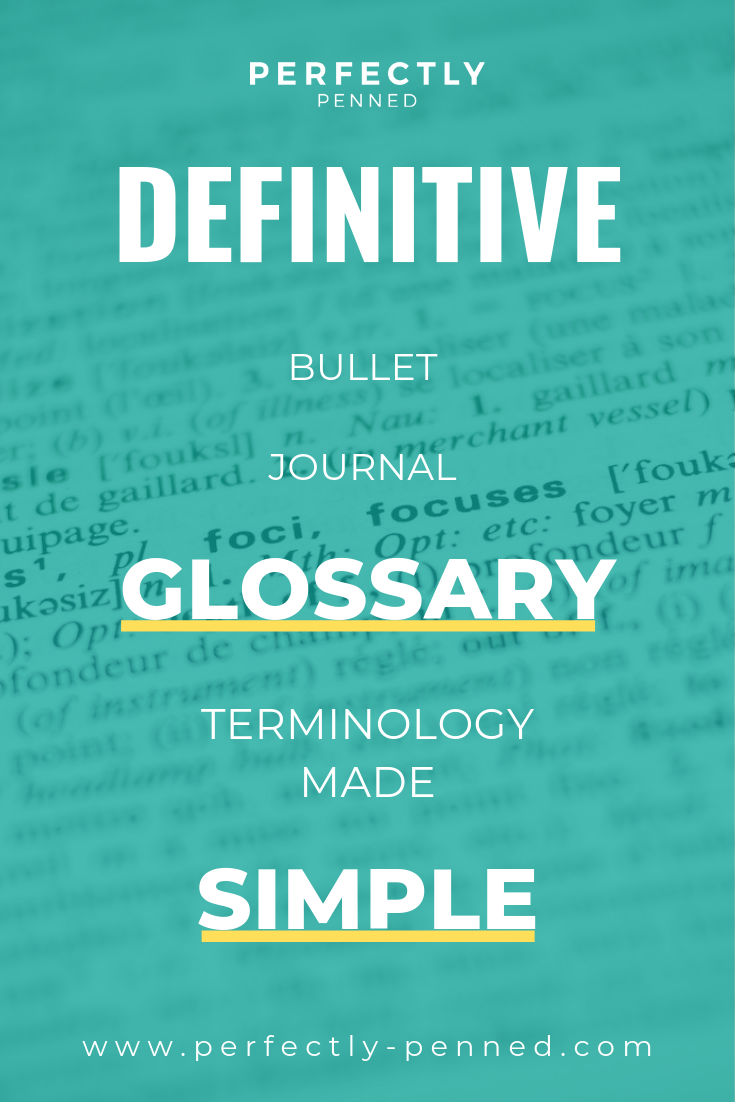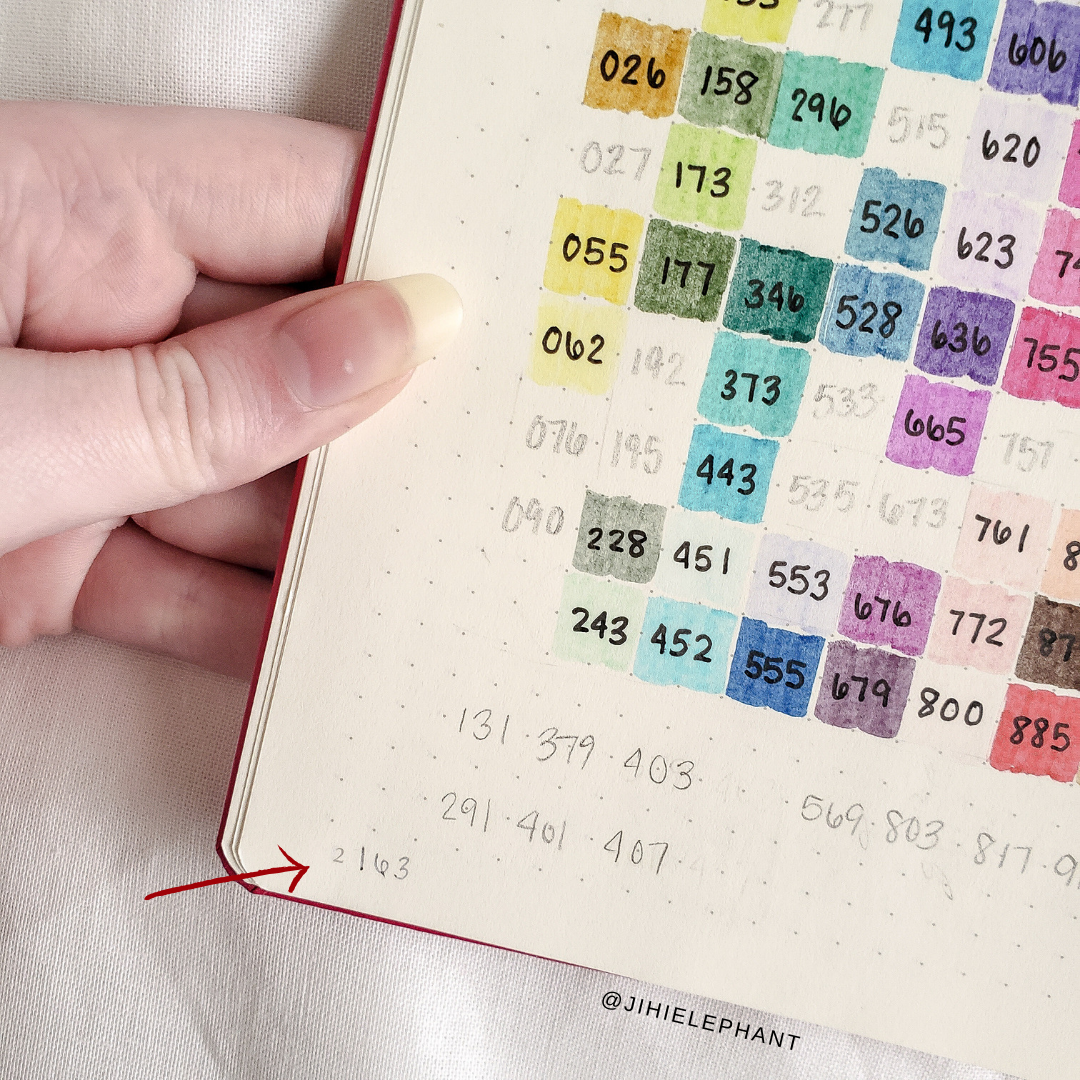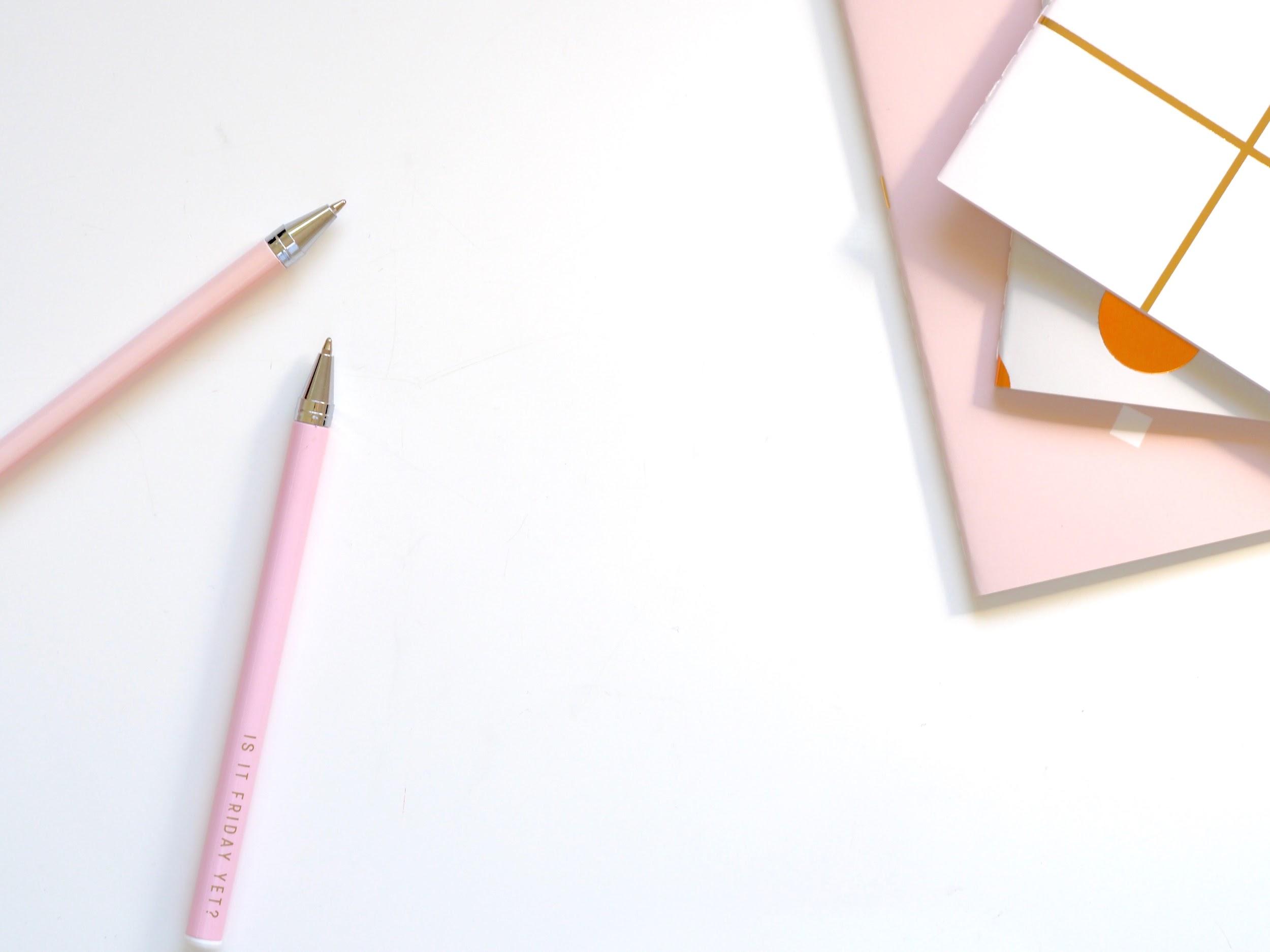Bullet journaling has become incredibly popular! With its popularity has come dozens, even hundreds, of new terms. There are terms related to bullet journaling, tools used in bullet journaling, and the layouts involved in bullet journaling. You can find all of these terms here.
Keeping track of all of the bullet journal related terms can feel impossible and that is why we have gathered as many of these terms as we can find.
This article will first discuss more general terms and will then discuss common layouts and other related must-know terms.
General Bullet Journal Terms
In this section, we will be defining and discussing various terms which relate to bullet journaling. These are general terms which can help you to learn more about and understand bullet journaling better.
Bullet Journal
The bullet journal was originally coined by Ryder Carroll as a method to organize information and to-dos simply in one place. A bullet journal is a form of planner that is created by the person who plans to use it. These planners generally use the bullet journal method.
Bullet Journal Method
The bullet journal method is the method which bullet journaling is based on. This method utilizes rapid logging and organizes information using bullets among other symbols and signifiers.
Bujo
Bujo is a shortened version of bullet journal often used for shorthand. This term uses the first two letters of bullet journal
Bullet Journal
This term often makes typing and writing easier, though the term is hated by many in the bullet journal community and many journalers prefer not to use it.
Bullet Journaler
The term bullet journaler refers to the person who creates bullet journals. Bullet journaler is often shortened to journaler when used in the context of bullet journaling.
A4, A5, A6, Etc.
These letters refer to the size of a journal or notebook. A5 is the most common notebook size measuring 5.8 inches by 8.3 inches (148 x 210mm). Other common sizes are A4 measuring 8.3 inches by 11.7 inches (210 x 297mm) and A6 measuring 4.1 inches by 5.8 inches (105 x 148mm).
Bleeding
Bleeding refers to ink that bleeds through one side of the page and is on the back side of the page. The ink may bleed through more than just one page.
Dot Journal
A dot journal is a notebook which has dots on the pages instead of lines. Dot journals are the most common type of notebook used for bullet journaling.
Flip-through
A flip-through is a video created where the journaler flips through the pages in a bullet journal to show the pages once they are created. These may include explanations of each layout, but they do not always.
Ghosting
Ghosting is similar to bleeding in that it is a common concern for journalers. Ghosting refers to ink that can be seen on the backside of the page it was used on. However, the ink does not bleed through the page.
Grid Journal
A grid journal is similar to a dot journal except instead of dots, a grid of lines covers the page. This style of notebook is less common.
GSM
GSM is a term that refers to the quality of the paper in a notebook. GSM stands for Grams per Square Meter. You can often find information on the GSM of the pages on the notebook’s packaging or description.
Layout
The term layout, frequently used interchangeably with spread or page simply refers to the style or design on a page in the bullet journal. For example, and monthly calendar might be referred to as the monthly layout.
Nesting
Nesting entries in the bullet journal refer to adding additional notes or tasks under other events, notes, or tasks. These subtasks might be a list of steps to take relating to another event or task.
Plan-with-Me
A plan-with-me refers to a video or blog post that walks the readers or viewers through the creation of a bullet journal, bullet journal layout, or a set of layouts. These are generally more than just a visual show or gallery and either create the layouts in front of the viewer or walks the viewer/reader through the process.
Rapid Logging
Rapid logging is the “language the bullet journal is written in.” It refers to using symbols such as bullet points to identify tasks, events, or notes quickly and concisely.
Signifier
Signifiers are symbols such as an exclamation point (!) or star (*) that helps other notes, tasks, or events to stand out. When items are starred this means the item is important or a priority and when an item is marked with an exclamation the item is an inspiration. It is not uncommon for journalers to create their own signifiers for various other reasons such as a lightbulb symbol to mean the item is an idea.
Spread
The term spread, frequently used interchangeably with layout or page simply refers to the style or design on a page in the bullet journal. For example, and monthly calendar might be referred to as the monthly spread. The term spread might be used broadly to refer to a set of layouts or pages.
Swatches/Swatching
Swatches or swatching refers to testing a product such as a pen, paint, or washi tape on a specific page in a notebook. Swatching can be done to test the product and can also be used to test the pages of the notebook. You can find more below under Washi Tape Swatches and Pen Test Pages.
Theme
Frequently a whole journal or a section of a journal might have a common theme on each page. Themes might refer to a similar style, color, or set of artwork that is used on every page allowing the pages to be visually grouped together. Not everyone chooses to keep themes. It is popular for those who use themes to keep a theme page to show little swatches of each theme by month or section.
Threading
Threading is a technique coined by Ryder Carroll, the creator of the bullet journaler. This technique helps to connect related information or layouts to be connected to similar layouts which have been separated by dissimilar information or layouts. Threading is usually done by providing the page number of similar or continued information to be linked either next to the related information or next to the page number of related information.
I know this sounds confusing so I have provided images below. These two layouts are different versions of the same concept. They are two different pen swatches for the same pen. I show how I’ve used threading to connect the two.
Walkthrough
A walkthrough is another form of plan-with-me or flip-through content. Labeling a video or article a walkthrough implies that the journaler will walk the reader or viewer through the process of creating a layout or set of layouts.
Bullet Journal Layouts Defined
Here are various popular bullet journal layouts. I will define and describe their purpose or what they are generally used for. I will also provide examples which I have created. Other examples can be found with a simple search! This is by no means a completely comprehensive list, there are likely way more layouts out there that made it on this list!
Books to Read
The books to read is one of many collections or list pages. These pages are generally in the form of a bookshelf, though it can be anything. The purpose is to either keep track of the books that have been read or the books one wants to read.
Braindump
Braindumps are a page or series of pages where ideas and random notes can be dumped for organization later. There is no rule on how these pages are done
Bucket List
Bucket lists are usually done in two ways, list form or doodle form. It is most common to see them done by season, but there is no limit.
Collections
I more specifically define a few of the most common collection spreads in bullet journaling. Essentially, these layouts are lists or collections or ideas, items, shows, books, etc. These layouts might include more artistic styles or could simply be a checklist.
Course Notes
These spreads are used by students to take notes on a subject or during class. In bullet journaling, these layouts are often attractive recreations of notes or study guides.
Daily
Daily pages are meant for daily to-do’s, appointments, etc. These layouts might include rapid logging sections and sometimes they include habit tracking, meal planning, or financial tracking.
Doodle Page
Doodle pages come in several forms. Sometimes they lay out steps to how to do a certain doodle, they might be filled with random doodles, themed doodles, or they could be a calendar with 30-days of doodles. Like most layouts, there are no rules.
Dutch Door
Journal Junkies describe the dutch door as “cutting out sections of your pages, [so] you can create a door-like mechanism while still maintaining the integrity of a [layout].” Dutch doors are most often used to create more space on a thread. For example, if you want to be able to see your week but also see your daily logs or monthly goals. The dutch door gives more space in one layout.
Exercise
Exercise pages might include items such as an exercise schedule, an exercise tracker, exercise logging, etc. Exercise items might also be included in a more general habit tracker as well.
Financial Tracking
financial tracking layouts are meant to track regular bills, subscriptions, payments, budgeting, spending, loans, and anything else having to do with finances.
Future Log
Future logs plan for the future by looking ahead at future months. Sometimes these logs focus on items such as assignments or birthdays. There are several ways to create these logs. Most often they are columns or rows with mini calendars they might also be circular or include only the mini calendars.
Goals
Goal spreads often list various goals for a given time and sometimes go even deeper to lay out how a goal might be achieved.
Gratitude & Self-Care
Gratitude pages log or list items the creator is grateful for. These sometimes are considered self-care pages. Self-care layouts are any layout that relates to self-care. This can be a self-care plan, self-care tracker, self-care list, etc. Mood trackers are one of the most common self-care layouts which also fall under habit tracking as well as health and wellness. Sometimes these layouts might include doodles.
Habit Tracking
Habit tracking pages are meant to track habits. Most often these spreads are meant to track multiple habits at once one month at a time. These trackers can be a whole layout on their own or be included in a monthly, weekly, or daily layouts.
Health & Wellness
Health and wellness layouts can sometimes overlap with exercise spreads. They might list, log, or track items such as physical symptoms, medication, etc. These layouts might overlap with self-care layouts as well.
Hello Pages
These spreads are meant to welcome the new month and occasionally say goodbye to the previous month. There is almost no limit to these spreads, though they are generally in the form of a title page.
Holiday & Gifting
These layouts encompass any page that helps plan for or track gift giving or that plan for a holiday. These spreads are generally used at Christmas time. But can be used for any holiday or gifting occasion such as birthdays.
Index
An index is an overview of what is in a given notebook usually indicating the page it is on. These are usually one of the first layouts in a bullet journal or planner.
Key
Keys lay out colors, symbols/signifiers, etc. These items help to organize the information in the planner. There are some general key examples; however, these are best when made for the user.
Level 10 Life
Level 10 Life is a concept developed by Hal Elrod in the book The Miracle Morning. He categorizes life’s priorities into 10 sections and encourages people to maximize their efforts in all categories. Common categories include family & friends, personal development, spirituality, finance, career, giving/contribution, romance, environment, recreation/fun, and health & fitness.
Lists
Lists are not confined to anything specific other than they list something. Some specific lists are mentioned in this glossary, though there is no guide to what can be listed. Common lists might be wishlists, collections, bucket lists, shopping lists, etc.
Meal Planning
These layouts are generally done weekly or bi-weekly, you can occasionally find them monthly though this is more difficult to accomplish. Sometimes a grocery list is incorporated, but generally, they are meant to plan out meals, usually by the categories breakfast, lunch, dinner, and snack.
Memory
Memory layouts are often a list or collection. They are a place to write or keep memories, add photos, etc. These spreads are similar to scrapbooking and journaling.
Monthly
A monthly page can be in the form of a calendar, log, etc. These pages are often meant to overview the month ahead. These spreads sometimes include tracking, goals, etc.
Mood Tracking
These layouts are like habit trackers but are meant to track moods. Each mood tracker has a key specific to the user. While they do not have to, it is common for mood trackers to be a year in pixels or to be an image broken into enough spots for the days of the month. The key generally denotes an array of moods frequently experienced by the journaler.
Movies to Watch
Movie spreads are similar to the books to read layouts in that they track movies to watch, or movies which have been watched. This is a collection spread.
Pen Test Layouts
Pen tests are like swatches for pens by type, color, brand, etc. These spreads are generally used for color testing or page testing.
Quotes
Quotes are frequently used in bullet journaling and can be whatever the creator wishes them to be so long as a quote or phrase is included. Quotes can be a page all their own or they may be incorporated into other layouts, including title pages.
School Spreads
School layouts encompass many layouts. They might be schedules, assignment lists, notes, guides, etc. A school schedule is a layout used by students to overview their semester either with general course information or an overview of the semester assignments. Time tables are also frequently used.
Title Page
A title page welcomes something new. Sometimes they welcome a new planner or planning topic. Hello layouts are considered title pages as well.
Travel & Vacation
These layouts are those used to plan out a trip or vacation, keep memories from these travels, or to track the places the journaler has been.
TV Shows to Watch
These spreads are like that for movies, except they list or track shows instead of movies.
Washi Tape Swatch
Washi tape swatches are similar to pen tests, except they are meant to show off washi tape instead of pens or ink.
Weekly
These are similar to the daily spreads except they include a full week in one layout. Like monthly and daily layouts, weekly spreads might include tracking.
Year in Pixels
The year in pixels is a form of mood tracker, though it can be used to track other items. It is a grid which allows a box for every day of the year, each column represents a month of the year. The various boxes in the grid are then filled in according to a key. In the case of a mood tracker, each mood is represented by a color. Each day’s square gets filled in according to that day’s mood.
Other Must-Know Terms
In addition to bullet journal- specific terms, here are a few more concepts that are related to bullet journaling and planning which you might see floating around.
Mind Mapping
It is likely that you already know what mind mapping is. Most of us learned how to create a mindmap in school, but let’s get a quick refresher. Mind mapping is similar to a braindump but is more organized. A mindmap takes one broad topic and breaks it into smaller topics or thoughts. Then, these smaller topics might also be broken down even further. Mind mapping is a great way to plan out a project, blog post, or homework assignment.
Tombow
Tombow is a commonly used brand. Many bullet journalers use the Tombow Dual Brush Pens and Tombow Twintone Pens. Since this is an incredibly popular brand, I wanted to be sure you knew what Tombow was.
Travel Planner
A travel planner is a very similar concept to the bullet journal. In essence, they might be the same. One of the main differences is the notebook used. Travel notebooks are generally smaller. Often, they are binders filled with removable inserts. They might also just be smaller travel-sized notebooks. The purpose is usually the same as a bullet journal.
Conclusion
Being informed on the terminology made a huge difference for me when I started bullet journaling. It helps you to better understand all of the social media posts and blog posts you come across. It also helps you to create a journal that best suits your needs. Now you’ve got all of the basic bullet journal terms down as well as an understanding of common bullet journal layouts and some related terms. How does it feel!?



